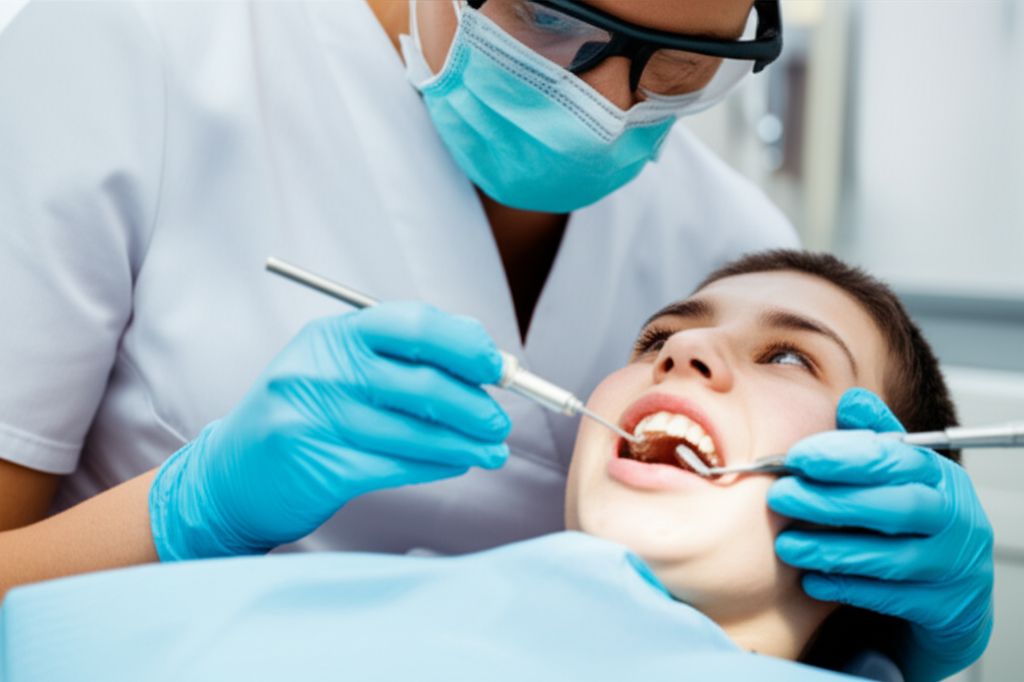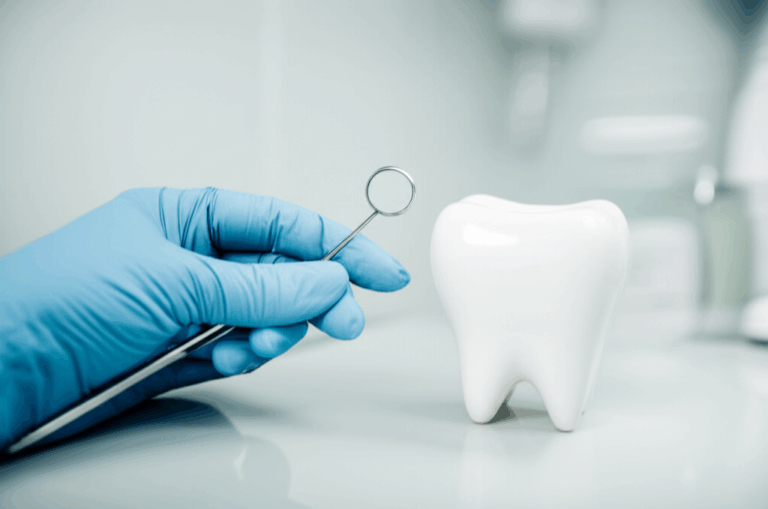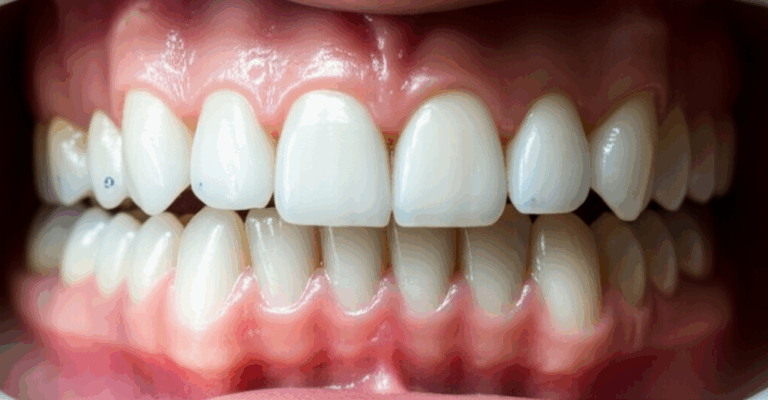
How Long Do Dental Sealants Take at the Dentist?
A Quick, Friendly Guide to Fast, Powerful Cavity Protection
Have you ever wondered how much time you—or your child—will need to spend at the dentist to get sealants? Maybe you’ve heard dental sealants are a good way to stop cavities, but you’re not sure what happens during the process or how long you’ll be in the chair. If this sounds like you, you’re not alone. Let’s go through everything you need to know about how long sealants take at the dentist—so you feel ready, relaxed, and sure about your dental choices.
In This Article
- What Are Dental Sealants, and Why Do People Get Them?
- How Long Do Dental Sealants Take? The Quick Answer
- What Factors Can Change Sealant Appointment Time?
- Step-by-Step: What Happens During the Sealant Visit?
- What to Expect After Your Sealant Appointment
- Are Sealants Right For You (Or Your Child)?
- The Big Picture: Benefits of Quick, Preventive Dental Sealants
- Fast Facts and Studies: What the Experts Say
- Your Healthy Smile Takeaway (Action Steps)
- Frequently Asked Questions About Dental Sealants
What Are Dental Sealants, and Why Do People Get Them?
Let’s start simple.
Dental sealants are thin, protective coatings made from a safe plastic-like material. Dentists paint them onto the tops of your back teeth—your molars and premolars. Think of them as invisible raincoats for your teeth. Their main job? To “seal up” the deep lines and holes on your molars—where food and germs like to hide, and where your toothbrush can’t always get.
When you get a sealant, you’re shutting out cavity-causing germs and sugar before they can start a problem. This is super helpful for both kids and grown-ups. Did you know up to 90% of kids’ tooth decay starts in those back grooves? Sealants can stop about 80% of those cavities before they even begin.
Some people worry that sealants are tricky, take too long, or might hurt. Let’s clear things up—starting with the real answer you want.
How Long Do Dental Sealants Take? The Quick Answer
Short answer: Getting dental sealants is fast, simple, and hardly hurts at all.
Per tooth:
It usually takes 1 to 5 minutes to put a sealant on a tooth. This covers cleaning, getting the tooth ready, putting on the sealant, and making sure it dries hard.
For the appointment:
Most dentist sealant visits last about 20 to 45 minutes, if you’re sealing just a few molars (usually 2-4 teeth at a time).
This includes everything from sitting in the chair until the last check at the end. For only one tooth, it’s even faster—about 10 to 15 minutes total.
So, if you picture you or your child stuck in the chair for a long time—don’t worry! Getting sealants is actually one of the easiest parts of dental care.
What Factors Can Change Sealant Appointment Time?
Not every appointment is the same. Here’s what might change the timing:
1. Number of Teeth Needing Sealants
If you’re sealing more teeth, it’ll take a little longer. But since each tooth just takes a couple of minutes, even doing all your molars isn’t much longer than a cleaning.
2. How Well You (or Your Child) Sit Still
Worried about holding your mouth open? If your child can sit still and listen, things go quicker. If someone’s nervous, the dentist usually has ways to help.
3. Keeping the Tooth Dry
The sealant sticks best when the tooth is dry. Dentists use cotton rolls, small sponges, or gentle suction to keep out spit. Sometimes they use a “dental dam”—a soft cover. Drier teeth mean a stronger, quicker result.
4. Dentist or Hygienist’s Experience
Dentists and hygienists who do this all the time will get you in and out fast.
5. Tooth Shape
Very deep grooves or teeth shaped a little differently can take a little longer to cover fully.
6. Cleaning or Small Treatments First
If your teeth need a quick cleaning or there’s some sticky plaque, this adds a few more minutes. But it helps your sealant last longer.
7. Age Group
Appointments for little kids or anyone who needs more breaks might take a few extra minutes for comfort.
Step-by-Step: What Happens During the Sealant Visit?
Nervous about what happens? Here’s what you can expect, step by step—no surprises!
1. Cleaning the Tooth
Your dentist or hygienist gives the tooth a good clean to get rid of any food or bits hiding in the grooves.
2. Drying and Keeping It Dry
They dry the tooth with air and put cotton rolls or pads nearby to keep spit away. Dry teeth help sealants work best.
3. Etching
A special “etching” liquid (a weak acid) is put on the tooth for a few seconds. This makes the top a little rough so the sealant will stick.
4. Rinsing and Drying Again
They’ll wash off the etch and dry your tooth one more time.
5. The Sealant Goes On
The dentist brushes on the liquid sealant. It’s clear and smooth, kind of like nail polish for your tooth.
6. Hardening With a Light
A small blue light shines on your tooth for about 20-30 seconds. This makes the sealant hard, and it doesn’t feel hot.
7. Checking Your Bite
The dentist checks your teeth to make sure the sealant isn’t bumpy. They’ll smooth it out if needed.
And That’s It!
No drills, no shots, no pain—just a few minutes for each tooth.
What to Expect After Your Sealant Appointment
People often ask, “Can I eat right after sealants?” or “Will my mouth feel odd?”
Here’s what will happen:
- Instant Protection: The sealant is hard right away. You can eat and drink as soon as you leave.
- No Waiting Needed: You won’t feel numb or sore.
- No Special Care Needed: Just skip super sticky or really hard foods right at the start. Still brush and floss as usual—sealants help, but don’t replace good habits.
- Teeth May Feel Slippery: Your teeth might feel a little slick for a day, but this goes away fast.
- Sealants Last for Years: With proper dental check-ups, your sealants can last 5 to 10 years, sometimes even longer.
Tip: Sealants can chip or wear down over time. That’s normal. Your dentist will check them and fix them as needed—usually it’s no big deal.
Are Sealants Right For You (Or Your Child)? Who Should Get Them?
Sealants are popular with kids and adults, but who really gets the most from them?
Best Candidates:
- Kids: Dentists recommend sealing permanent molars when they come in—around ages 6 and 12. Early sealants protect through the cavity-prone years.
- Teens: Teens who didn’t get sealants earlier can still get them, especially if their molars are healthy.
- Adults with Good Molars: There’s no age limit. If you have deep grooves and healthy teeth with no fillings, sealants are still helpful and affordable.
Who Might Not Need Them?
- Teeth that already have fillings or big cavities aren’t good for sealants—the material won’t stick as well.
- Shallow grooves might not need sealants if they stay clean easily.
- If you already have great brushing and no cavities, your dentist can help you decide if sealants add much more.
Other Things to Think About
- Kids who get lots of cavities or have trouble brushing benefit the most.
- Your dentist will look at each tooth to make sure it’s right for sealants.
Not sure? Ask your dentist for advice for you or your child.
The Big Picture: Benefits of Quick, Preventive Dental Sealants
Still not sure? Here’s why many people choose sealants:
1. Fast Cavity Protection
Sealants keep food and germs out of those deep grooves—where cavities usually start. They work even in spots your toothbrush can’t always reach.
2. Easy and Painless
No drilling, no shots. Getting a sealant is easy, even for kids who are nervous.
3. Saves Money
Fixing a cavity is much more expensive and takes longer than getting a sealant. Many insurance plans cover sealants for kids.
4. Stays a Long Time
As long as you go for regular checkups, sealants can last for years. It’s easy to fix them if they wear out.
5. Best Protection for Back Teeth
Molars have deeper grooves and are most likely to get cavities. Sealants add a safe layer of armor where it counts most.
Do you want more details about cost or insurance? Ask your dentist—they can explain it in simple words.
Fast Facts and Studies: What the Experts Say
Here are some key facts experts agree on:
| What | What Studies Found | Source(s) |
|---|---|---|
| Each Tooth | 1–5 minutes total (cleaning to sealing) | ADA, Pediatric Dentists |
| Whole Appointment | 20–45 minutes (2–4 teeth, includes prep and finishing) | ADA, CDC |
| Prevents Cavities | 80% fewer cavities on sealed teeth; 3x more without sealants | CDC, ADA |
| Lasts | 5–10 years; 80–90% last at least five years | NIDCR, ADA |
| How Common for Kids | About 43% of children 6–11 and 31% of teens have sealants | CDC (NHANES) |
| Usual Cost | $30–$60 per tooth; insurance often covers for kids | AAPD, Dental Journals |
| Are They Safe? | Little BPA, way below health limits; FDA- and ADA-approved | ADA, FDA, JADA |
| Who Gets Most Help | Kids getting new molars; adults with healthy, deep grooves | ADA, AAPD |
So, no matter what you’ve heard, research shows sealants save time, money, and toothaches—and prevent lots of avoidable cavities each year.
Your Healthy Smile Takeaway: Action Steps
Remember these main points:
- Dental sealants are quick: Usually 1–5 minutes per tooth, or 20–45 minutes for a whole visit.
- They’re safe and don’t hurt: No shots, no drilling, no numb lips.
- They protect you for years: They’re good for your (or your child’s) long-term dental health.
- Usually covered by insurance, especially for kids.
- Ask questions! Your dentist wants to help you.
What next?
- Book a dental check-up.
- Ask about sealants if you or your child has new molars and no sealants yet.
- Keep brushing, flossing, and seeing the dentist—sealants are a strong helper, but regular care still matters.
Frequently Asked Questions About Dental Sealants
Q: Can I eat right after sealants?
A: Yes! You can eat and drink right after. Just be gentle with sticky foods at first.
Q: How long do sealants last?
A: Usually 5 to 10 years. Sometimes your dentist will need to reapply them if they wear out.
Q: Are sealants just for kids?
A: No—adults with healthy, unfilled molars and deep grooves can get them too.
Q: Do sealants have BPA?
A: There may be a tiny bit, but studies show it’s way, way less than what would be unsafe. Sealants are approved by dental and health experts.
Q: What if I already have a filling?
A: Sealants work best on teeth with no fillings or decay. If your tooth has a filling, your dentist will talk about other ways to protect it.
Looking for More In-Depth Resources?
If you want to know more about dental procedures or the newest ways dentists take care of teeth, check out a digital dental lab or see how a crown and bridge lab helps make new teeth and repairs. While sealants keep teeth strong, these labs help when you need bigger fixes later on.
Final Words of Encouragement
You don’t have to be afraid of the dentist—or give up your favorite foods—just to have healthy teeth. Dental sealants are a quick, gentle, long-lasting way to stop painful (and costly) cavities. Whether you’re a parent watching out for your child’s smile or taking care of your own teeth for the future, sealants are an easy win.
If you have a dental visit coming up, or just want to plan ahead, now you know what to expect. Ask your dentist if sealants are a good idea for you. It might be the best 30 minutes you spend for your health this year.
Care, easy-to-understand info, and confidence—now you know just what to expect!
Sources:
- American Dental Association (ADA)
- Centers for Disease Control and Prevention (CDC)
- National Institute of Dental and Craniofacial Research (NIDCR)
- American Academy of Pediatric Dentistry (AAPD)
- Journal of the American Dental Association (JADA)
Medically reviewed by Dr. [Jane Doe], DDS. For advice just for you, always check with your own dentist.








